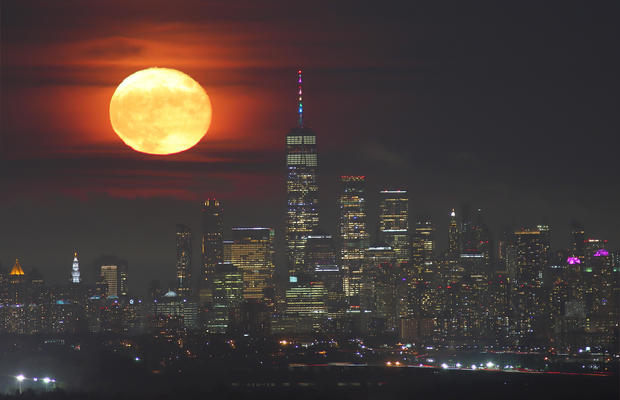Why June 2023’s full moon is called the strawberry moon—and what it will look like when it lights up the night
Around the world, people can catch a sweet treat in the night sky this weekend – the strawberry moon.
The strawberry moon is June’s full moon – and depending on where you live on the planet, it will either appear on Saturday or Sunday, according to NASA.
Gary Hershorn / Getty Images
Why is it called the strawberry moon?
According to The Old Farmer’s Almanac, the name was used by Native American Algonquin tribes that live in northeastern U.S. and Ojibwe, Dakota and Lakota peoples. It was used to mark the ripening of strawberries ready to be gathered in June.
Traditionally, the strawberry moon is the full moon in June, which is typically the last of spring or first of summer. This full moon also has other names such as flower moon, hot moon, honey moon, rose moon, Vat Purnima and Poson Poya, according to NASA.
What will the strawberry moon look like?
Since the strawberry moon will be positioned lower in the sky in the Northern Hemisphere, the moon will appear to give a “warmer” light, Space.com reported. Therefore, it will look more yellow or orange in a way similar to sunsets.
This year, the Antares bright star, which is 36.7 light years away, will appear a few degrees to the right of the moon, according to NASA.
When will be the best time to see the June full moon?
The strawberry moon will be peak just before midnight at 11:42 p.m. Saturday EDT, said NASA, whose observations and time are based off their headquarters in Washington, D.C. For observers in Argentina and in Atlantic Daylight Time zones eastward across the rest of North America, Europe, Africa, Asia, and Australia, the strawberry moon will rise on Sunday, NASA said.
It will look full from Friday night through Monday morning.
The Farmer’s Almanac suggests finding an open area and watching as the moon rises. The website details specific moonrise times for different ZIP codes.
Prior to the strawberry moon, May’s flower moon and April’s pink moon took the sky. And following this celestial event, there will be four supermoons in a row – one in July, two in August and one in September, retired NASA astrophysicist Fred Espanak told Space.com.
For all the latest World News Click Here
For the latest news and updates, follow us on Google News.



